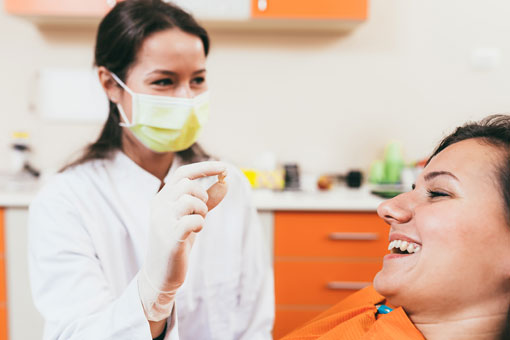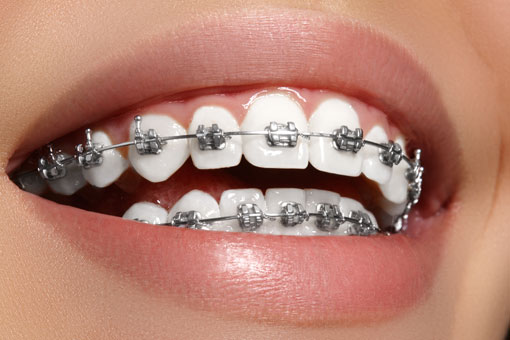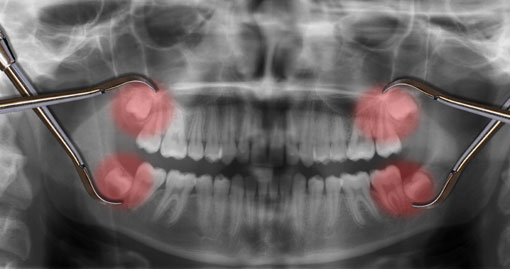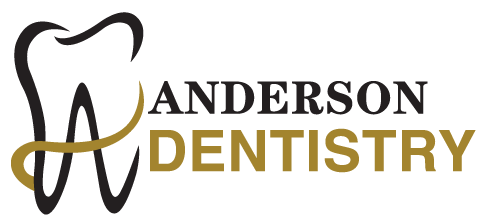Tooth Extractions
What Are The Top Reasons For Tooth Extractions?
Most patients prefer to avoid having a tooth removed, and Dr. Scott Anderson, usually recommends saving the biological tooth if it is possible. A conservative approach to restoring the natural tooth with a crown, filling or treating it with a root canal procedure is usually preferred, but extraction is an option in severe cases. There are several possible reasons for dental extraction, such as severe tooth damage, orthodontic treatment, gum disease and bone loss, and abnormal tooth development. Kingston dentist, Dr. Scott Anderson, will be happy to help you assess what is best for your particular dental emergency or tooth pain. Book a consultation today!

Severe Tooth Damage From Decay Or Trauma

A tooth that has been subject to severe decay or infection (e.g. an abscessed tooth) may need to be removed. If it is diagnosed in the early stages, it is often possible to preserve the biological tooth of the patient. However, when the tooth has already undergone significant decay it may not be possible to salvage the tooth. In this situation, removal may be the only option to preserve the adjacent teeth from the same issues.
Significant injury or trauma to the tooth may also be a reason for dental extraction. If the tooth is severely chipped, cracked or broken, it may cause damage to the gums and other teeth in the mouth. As a result, removal of the tooth may be indicated. Some patients opt to get a dental implant to replace a damaged tooth rather than use restorative methods such as a dental crown. In this case, the original tooth must be completely removed by way of dental extraction before the dental implant can be placed into the jaw. Dental extraction can often be a more affordable option for the restoration of a severely damaged tooth, particularly over the long term, which is also a considerable factor for some patients.
Orthodontics And Tooth Alignment
Some individuals have a crowded jawline that does not offer enough room to hold all the teeth in the correct position before commencing orthodontic treatment, such as dental braces. There are two possible solutions to this problem: to expand the jawbone to allow more space for the teeth to be aligned as needed, or to remove some of the teeth so that the remaining teeth can fit correctly. Therefore, incorrect alignment of the teeth due to a small jawbone may be a reason for a dental extraction to occur. Teeth that are too large for the mouth may also need to be removed to prevent them from causing problems to other teeth..

Impacted Wisdom Teeth

Tooth extractions are also recommended when a tooth does not erupt through the gums or becomes impacted. This often occurs with third molars, commonly known as wisdom teeth. Teeth that have not erupted or are impacted are more likely to become infected or be associated with other complications, such as infection, pain, and inflammation. It is for these reasons that dental extraction of the teeth is often carried out for teeth with abnormal development.
Primary Tooth Extractions
Dental extraction may also be recommended for children with primary teeth that have not fallen out at the appropriate time. This is usually recommended only several years after the expected time of natural loss to encourage the permanent adult teeth to erupt in the correct position, thus reducing the need for orthodontic treatment later on. Contact us to book an appointment for tooth extractions of your kids.

Post-Op Instructions
After your extraction, it’s important for a blood clot to form, to stop the bleeding and begin the healing process. Bite on a gauze pad (place over each surgical site) changing it for 30-60 minutes until the bleeding stops completely. Light oozing is normal throughout the day of surgery. When the surgical site(s) are not visually/actively bleeding, remove the gauze and discontinue its use. You may eat and drink between gauze changes. Overuse of gauze or talking with gauze in place can promote bleeding. If you run out of gauze, you can place a tea bag over the surgical site(s) and gently bite. The tannic acid constricts the vessels and can slow or stop bleeding.
If you are experiencing heavy bleeding at any time after your surgery (consistent with a nosebleed) call our office as soon as possible. If after 48 hours you have any numbness of the lip, teeth or chin (this is usually temporary) please call our office.
Apply ice packs to the outside of your face for a minimum of 24 hours after your surgery.
Pain can peak after 48-72 hours. If after 72 hours you are still experiencing muscle soreness apply heat (towel soaked in hot water, warmed gel pack or heating pad wrapped in a towel). Practice opening and closing. It is important to keep your jaw muscles moving. Continue heat as long as you have swelling and/or muscle soreness. It is not uncommon to develop bruising on the face after oral surgery.
Do not vigorously rinse or spit for 24 hours.
Do not drink through a straw or smoke for 1 week.
These actions are the main cause(s) of dry socket. A dry socket is formed when the blood clot is dislodged prematurely from the socket causing pain to your neck, head and/or ear(s). This will usually occur 3-5 days after your surgery. If you experience these symptoms, you will need to schedule an appointment with our office.
A soft diet is recommended for at least one week (anything that you can cut with a fork).
The day of the surgery foods such as yogurt, pudding, smoothies, shakes (not using a straw), ice cream and mashed potatoes are recommended. You may resume a normal diet when it’s comfortable for you.
Take all medications as prescribed.
if you have any side effects from taking any medications, discontinue use and call our office immediately. Please refer to the Medications List you received from our office to review instructions.
Please avoid any physical activity (such as school sports) including lifting and bending for at least 3-5 days.
Ease back into exercise when ready. Throbbing at the surgical site is normal and will subside but take it slow.
If sutures were used, they should dissolve in 5-7 days. We will advise if you need to be seen for suture removal if dissolvable sutures were not used. If no post op appointment was scheduled, but you have concerns, we are here to help. Contact us today with any questions you may have.
VISIT US
Dr. Scott Anderson
277 King St. East,
Kingston, ON
K7L 3B1
HOURS OF OPERATION
Monday: 8:30 am - 5:00 pm
Tuesday: 8:30 am - 5:00 pm
Wednesday: 8:30 am - 5:00 pm
Thursday: 8:30 am - 5:00 pm
Friday: 8:30 am - 5:00 pm
Saturday: Closed
Sunday: Closed



